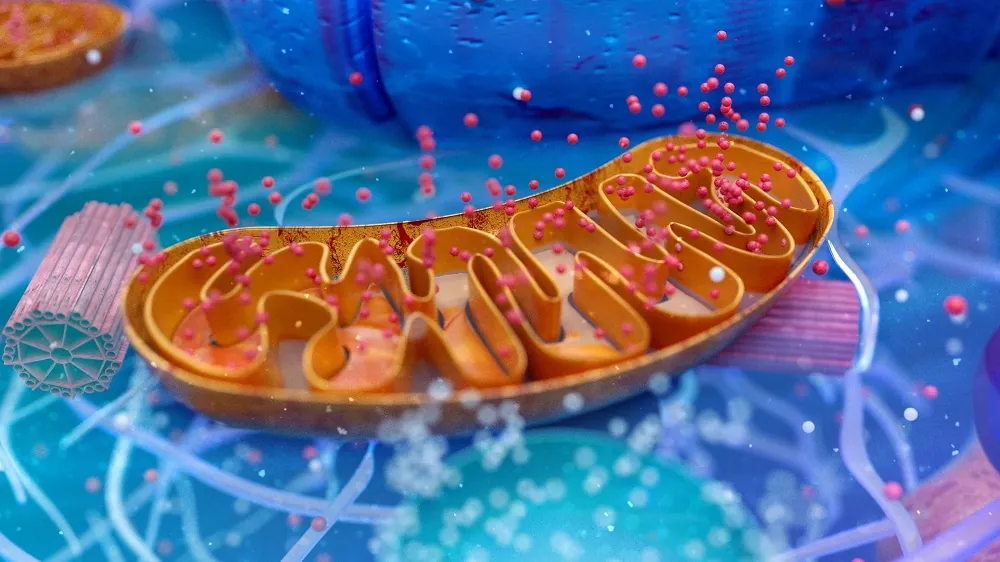Researchers publishing in Nature Biotechnology have developed a novel method of editing mitochondrial DNA, which cannot be accomplished with nuclear DNA tools.
Where CRISPR doesn’t work
While CRISPR is the established, go-to method for genetic modification in the nucleus, it doesn’t work in the mitochondria. CRISPR requires guide RNA as part of its basic function, and there is no way yet developed to bring guide RNA into the mitochondria [1]. The entire technology appears to be infeasible for this purpose.
Other technologies, such as transcription activator-like effector nucleases (TALENs), can help against some mitochondrial diseases by destroying mutated DNA in targeted regions [2]. Because they work in cases when only some of the DNA is mutated, they could possibly be of some use against age-related mitochondrial dysfunction, but these researchers note that these technologies only work by degrading; they are no help against cases in which all the mitochondria have mutant DNA, and they can’t be used to insert sequences, either.
Previous efforts in mitochondrial editing have seen some limited success; one combination of molecules was demonstrated to change target genetic Cs to Ts in mitochondria [3], while another was able to change As to Gs [4]. These technologies, however, have off-target effects, including in the nucleus [5]. Something much better would be required for clinical use.
Enter MutH
Like the CRISPR-associated Cas9, MutH is derived from a natural bacterial process. In nature, E.coli bacteria use this particular nickase to prevent DNA polymerase from causing genetic errors [6]. Previous work has combined MutH and TALE to target specific mitochondrial DNA strands [7].
These researchers build upon that previous work by blending that approach with another approach that works with CAS to change mitochondrial As to Gs [8]. These researchers found that, by itself, that particular approach is almost totally ineffective; it lacks what it needs to hook onto.
However, when combined with MutH, the results were extremely good. There were few off-target effects, relatively high editing efficiency in many cases, and almost no errors when the DNA was successfully edited. While the results were highly dependent on location-specific issues, the researchers were able to expand its scope from only 6% of the human mitochondrial genome to a full 71%.
The researchers then pushed their approach even further, finding many other MutH-like nickases that had different properties and could target different areas of the mitochondrial genome. By combining these nickases with TALEs, the researchers were able to change Cs to Ts along with As to Gs, creating mitoCBE and mitoABE, respectively. These compounds were found to be much more precise and efficient than previous approaches; the researchers observed no off-target effects on mitochondrial DNA at all.
The technology remains imperfect. By using mitoBEs on human cells derived from people with the mitochondrial genetic disorder LHON, the researchers were able to repair only about 20% of the affected mitochondria. However, that small amount of repair resulted in significant improvements in metabolism.
An unfinished solution
While mitoBEs are intended for use against mitochondrial genetic disorders, can only affect certain genetic letters in certain places, and are still in an early, unfinished developmental stage overall, it may one day be possible to use this approach to more effectively deal with age-related disorders caused by accumulated mitochondrial damage. Protecting mitochondrial DNA by bringing it into the nucleus.was part of the original SENS Research Foundation plan for tackling aging, but this technology may solve that problem in a different way.
We anticipate such tools to be broadly used in basic research and therapeutics in treating diseases associated with mitochondrial defects.
Literature
[1] Gammage, P. A., Moraes, C. T., & Minczuk, M. (2018). Mitochondrial genome engineering: the revolution may not be CRISPR-Ized. Trends in Genetics, 34(2), 101-110.
[2] Hashimoto, M., Bacman, S. R., Peralta, S., Falk, M. J., Chomyn, A., Chan, D. C., … & Moraes, C. T. (2015). MitoTALEN: a general approach to reduce mutant mtDNA loads and restore oxidative phosphorylation function in mitochondrial diseases. Molecular Therapy, 23(10), 1592-1599.
[3] Lee, H., Lee, S., Baek, G., Kim, A., Kang, B. C., Seo, H., & Kim, J. S. (2021). Mitochondrial DNA editing in mice with DddA-TALE fusion deaminases. Nature communications, 12(1), 1190.
[4] Cho, S. I., Lee, S., Mok, Y. G., Lim, K., Lee, J., Lee, J. M., … & Kim, J. S. (2022). Targeted A-to-G base editing in human mitochondrial DNA with programmable deaminases. Cell, 185(10), 1764-1776.
[5] Lei, Z., Meng, H., Liu, L., Zhao, H., Rao, X., Yan, Y., … & Yi, C. (2022). Mitochondrial base editor induces substantial nuclear off-target mutations. Nature, 606(7915), 804-811.
[6] Ban, C., & Yang, W. (1998). Structural basis for MutH activation in E. coli mismatch repair and relationship of MutH to restriction endonucleases. The EMBO journal, 17(5), 1526-1534.
[7] Gabsalilow, L., Schierling, B., Friedhoff, P., Pingoud, A., & Wende, W. (2013). Site-and strand-specific nicking of DNA by fusion proteins derived from MutH and I-SceI or TALE repeats. Nucleic acids research, 41(7), e83-e83.
[8] Richter, M. F., Zhao, K. T., Eton, E., Lapinaite, A., Newby, G. A., Thuronyi, B. W., … & Liu, D. R. (2020). Phage-assisted evolution of an adenine base editor with improved Cas domain compatibility and activity. Nature biotechnology, 38(7), 883-891.





